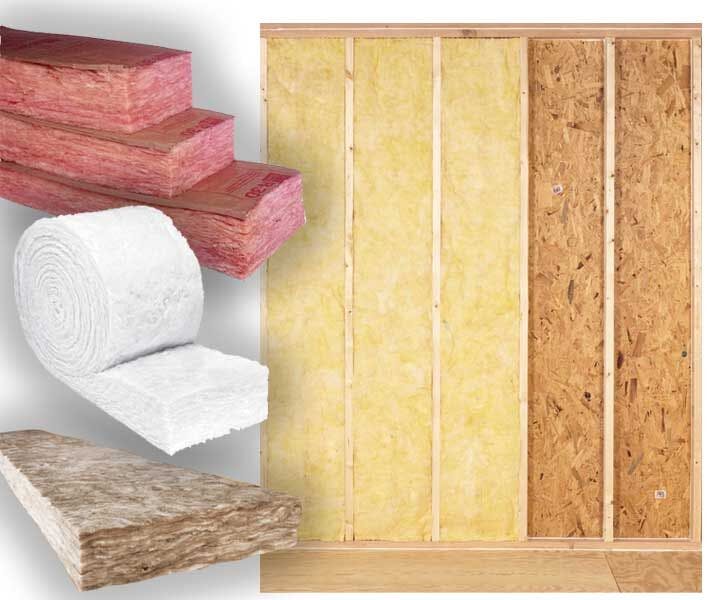Walls

Wall cavities can be insulated with batts, and with blown-in or spray foam. This guide covers only batts insulation.
Using batts in an empty wall cavity: For glass fibre batts make sure the batts are ½" wider than the cavity they will be installed in, so they will fit properly in the wall cavity without falling out. Batt insulation is held in place by friction, so it is important that batts are the correct size. Rock/Slag fibre batts are a little stiffer and therefore do not need to be quite as wide. Consult manufacturer's installation guides for suggested widths.
Glass fibre insulation sized for 16" on center is 15" wide, in order to fit tightly into the 14.5" wide cavity. Also make sure that the batt is the same thickness as the wall cavity, or that multiple layers of batts equal the thickness of the cavity. A 2"x 4" wall cavity is 3.5" deep and a 2"x 6" wall cavity is 5.5" deep.
Existing homes may have been built with rough cut lumber, so a 2"x4" or 2"x6" may be the actual dimensions, use a measuring tape to check if unsure. Remember that we want no more than a ¾" air space remaining in the cavity. This rule applies to any and all cavities that will be insulated.
Installing batts in an empty wall cavity:

Glass fibre batts need to be installed into the cavities created by the framing. All walls that separate the heated area from unheated areas require insulation. Most interior walls do not.
All cavities that require insulation must be filled so that the insulation is flush with the framing members. If the insulation extends out beyond the framing members, it will get compressed and the R-value of that cavity will be reduced. If the cavity is not filled completely with insulation, there will be an air space that creates a convection current to start, which will increase the rate of heat transfer in that cavity.